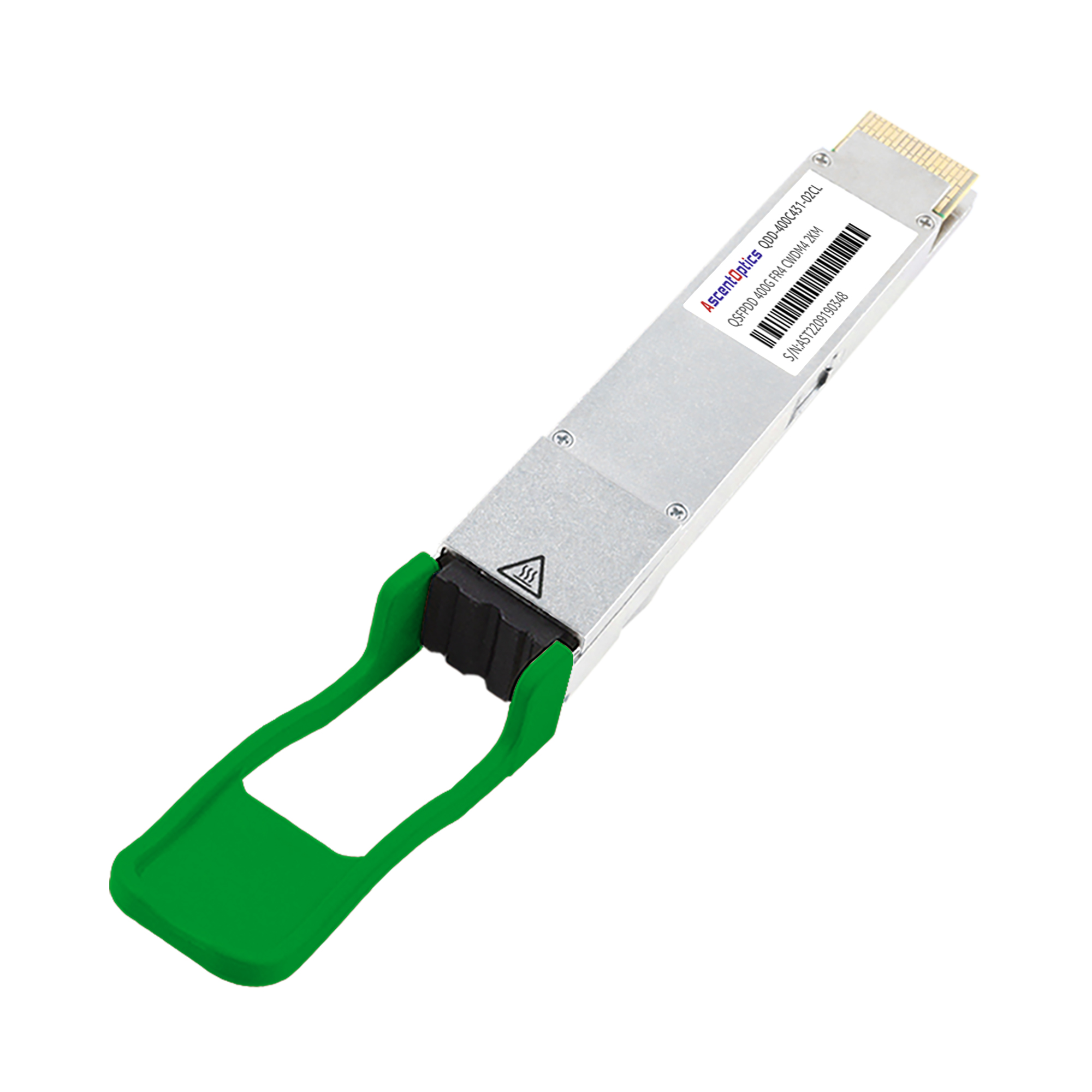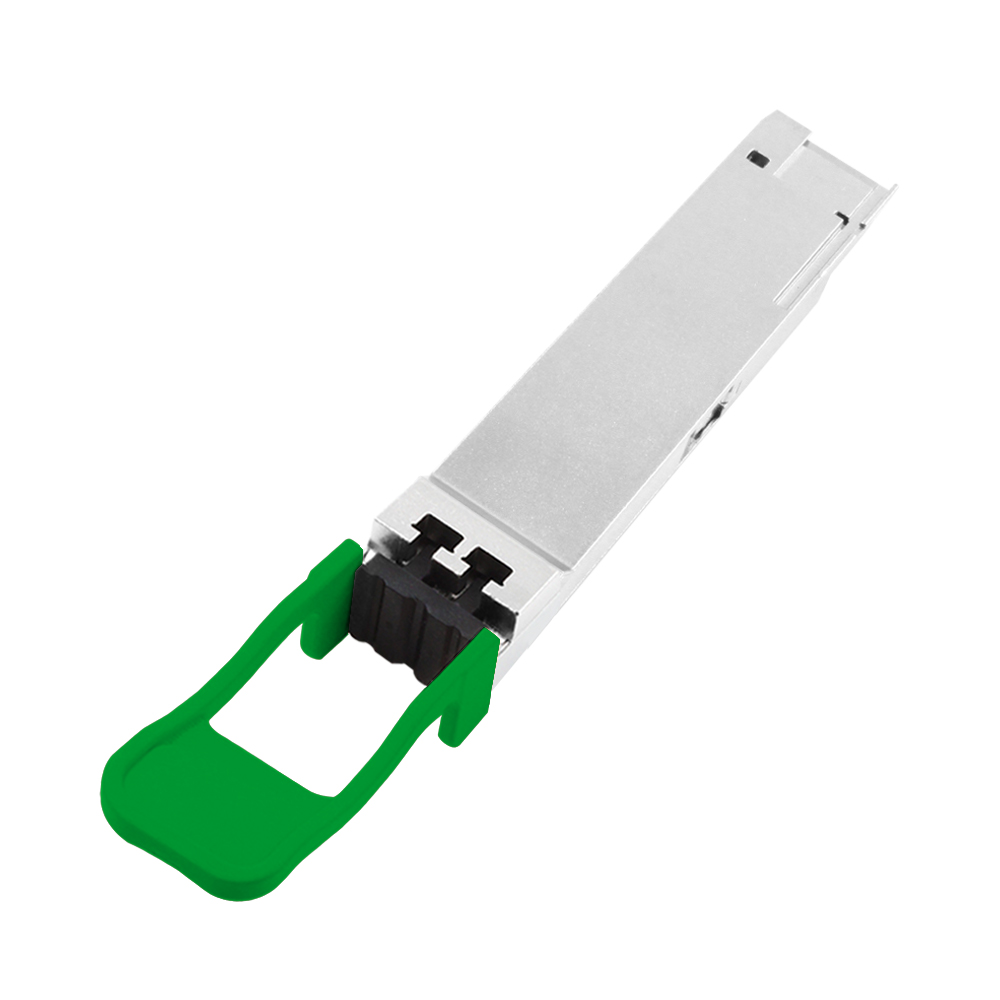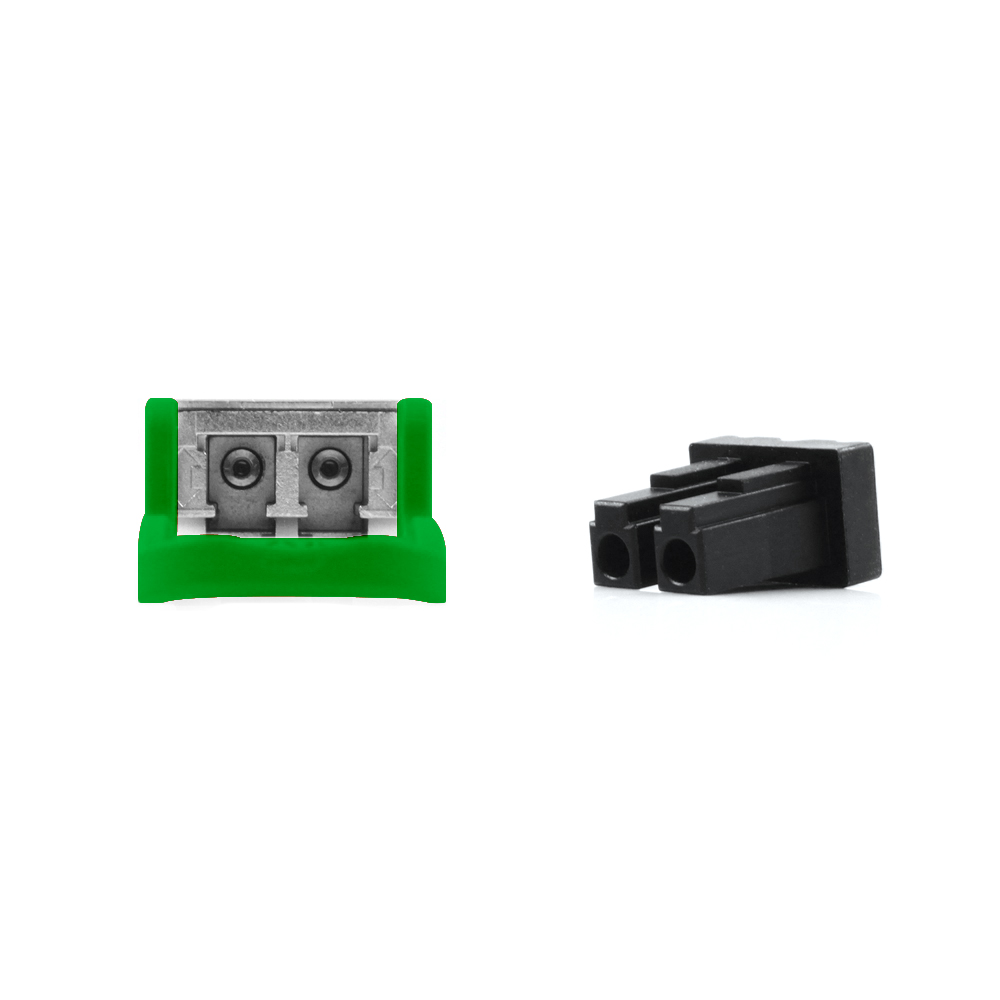With the rapid growth of generative AI, cloud computing, and large-scale model training, data centers are demanding higher-bandwidth and lower-latency interconnects. As a result, 400G Ethernet has entered large-scale deployment. Among the various 400G single-mode standards, 400GBASE-FR4 (IEEE 802.3cu) has become the dominant choice for short-reach applications thanks to its 2 km transmission distance, compatibility with existing duplex LC infrastructure, and lower deployment cost. This article therefore highlights its key features, performance metrics, and deployment considerations.

The 400G QSFP-DD FR4 optical transceiver is a high-performance 400Gbps module designed for network devices that require large bandwidth and high-speed connectivity. It is built on the QSFP-DD (Quad Small Form-Factor Pluggable Double Density) form factor, providing higher port density compared with traditional QSFP28 interfaces and making it well suited for modern data-center architectures.
Furthermore, the module supports 4×100G PAM4 optical lanes and delivers up to 2 km transmission over a single strand of single-mode fiber (SMF). Using O-band CWDM4 wavelength multiplexing (1271/1291/1311/1331 nm), it combines four 100G optical signals through different wavelengths. Together with an advanced DSP and PAM4 modulation, the 400G FR4 ensures stable, reliable performance over standard SMF.
Thanks to its duplex LC interface, mature CWDM4 wavelength grid, and low-power operation, the 400G QSFP-DD FR4 module is ideal for data-center Spine–Leaf networks, cloud platforms, AI computing clusters, and other scenarios requiring high-speed 400G interconnects.

Achieves a total bandwidth of 400 Gbps via 4 × 100G PAM4 optical lanes.
“FR4” stands for a 400G short-to-medium reach solution using 4 wavelengths (4 λ).
Utilizes CWDM wavelengths: 1271 nm / 1291 nm / 1311 nm / 1331 nm.
Supports up to 2 km over single-mode fiber (SMF), ideal for medium-distance interconnects within and between data centers.
Fully compatible with mainstream 400G switches and routers (NVIDIA, Cisco, Arista, H3C, etc.). Additionally, the double-density design delivers significantly higher port capacity than traditional QSFP28/QSFP56.
The module typically operates at 10–14W, depending on the internal optical and electrical design. Moreover, it uses an EML transmitter paired with a PIN or APD receiver, delivering strong signal integrity over 2 km of single-mode fiber. Forward Error Correction (FEC) is required to enhance PAM4 signal performance and ensure stable, reliable 400G transmission.
It is currently one of the most mainstream and widely deployed solutions for 400G data center interconnects.
The 400G QSFP-DD FR4 (400GBASE-FR4) is currently the most mainstream and cost-effective optical transceiver solution for 400G upgrades within 2 km in data centers. Its core advantages are as follows:
Directly reuses existing duplex LC single-mode fiber infrastructure without requiring additional parallel fibers or MTP/MPO breakout cables. This saves 50%–75% of fiber resources and dramatically reduces deployment costs.
Compared with coherent solutions such as 400G ZR/ZR+, FR4 is 60%–80% cheaper and remains the most economical 400G solution within the 2 km range. Furthermore, it offers 30%–50% lower overall cost than DR4 when accounting for breakout cables and patching accessories.
Mainstream modules operate at 10–12W, while the latest silicon photonics versions with low-power DSPs have reduced power consumption to 8–9W, significantly lower than DR4 and LR4. This makes FR4 highly thermally efficient, especially in 1U chassis with 96×400G ports, enabling reliable operation in ultra-high-density deployments.
Fully compliant with IEEE 802.3cu, the module is backward-compatible with 100G-FR/LR/CLR interfaces and can operate at 100G when inserted into existing 100G ports. It provides the smoothest upgrade path from 100G: it reuses the same 100G CWDM4 wavelength grid (1271–1331 nm), allowing legacy SMF duplex jumpers and CWDM multiplexers to remain in service, minimizing migration cost.
The module uses uncooled CWDM lasers with high temperature-drift tolerance, eliminating the need for TEC cooling and improving overall stability. It supports hot-swapping, DDM digital diagnostics, and CMIS 5.0 management, enabling efficient monitoring and operational maintenance.
Adopts non-coherent direct-detection technology with end-to-end latency <100 ns, perfectly suited for latency-critical applications such as AI training, HPC, and high-frequency trading.

FR4 is the preferred solution for intra-data center connectivity in modern deployments. It is predominantly used in the most common scenario: 400G backbone links between ToR Leaf switches (access layer) and Spine switches (aggregation/core layer). Its 2 km reach perfectly covers inter-floor and inter-building connections in medium-to-large campus-style data centers.
The 400G QSFP-DD FR4 is primarily deployed for medium- to short-reach high-speed interconnects within a data center campus, including inter-building and inter-availability-zone (Zone) East-West traffic, typically spanning 300 m to 2 km. It fully meets the high-bandwidth demands of AI training clusters that span multiple buildings, large-scale VM migrations, storage replication, and similar workloads.
Additionally, FR4 is widely adopted for short-reach DCI within the same campus, providing critical 400G links between buildings (500 m–2 km), making it the de facto standard for building campus-level 400G backbone networks.
With the continuous expansion of large-scale model training and inference, AI clusters require a massive number of 400G RoCEv2 high-speed links to build the interconnect fabric between GPU/TPU nodes. Thanks to its low power consumption, excellent compatibility, and easy deployment with duplex LC connectors, the 400G QSFP-DD FR4 has become the mainstream choice for constructing 400G networks among GPU servers (e.g., H100/H200/GB200/B200).
Leading cloud providers and hyperscalers—including AWS, Meta, Google, Alibaba, and ByteDance—are widely adopting FR4 in their Spine-Leaf networks and cloud infrastructure upgrades. It is extensively deployed at scale across 400G Top-of-Rack (ToR), aggregation, and core layers.
In enterprise-grade data centers undergoing capacity expansion, 400G QSFP-DD FR4 is the preferred solution for inter-floor and inter-building interconnects (typically 300 m–2 km), enabling seamless 400G upgrades while fully reusing existing duplex LC single-mode fiber infrastructure.
Summary: If you need to upgrade to 400G within 2 km in a data center using existing duplex single-mode fiber cabling, FR4 is currently the optimal solution across all four dimensions — total cost, power consumption, compatibility, and deployment complexity. It is also the undisputed mainstream choice for 400G deployments from 2024 through 2026.

As 400G deployments accelerate across modern data centers, the FR4 standard has become the de-facto solution for 2 km single-mode links. Its combination of low power consumption, mature CWDM4 ecosystem, LC-based cabling compatibility, and cost-effective performance makes it the most balanced option for large-scale cloud platforms, AI training clusters, and enterprise data-center upgrades.
With a clear upgrade path to 800G and 1.6T, the 400G QSFP-DD FR4 module will remain the dominant choice for data-center interconnects throughout the 2024–2026 transition cycle.